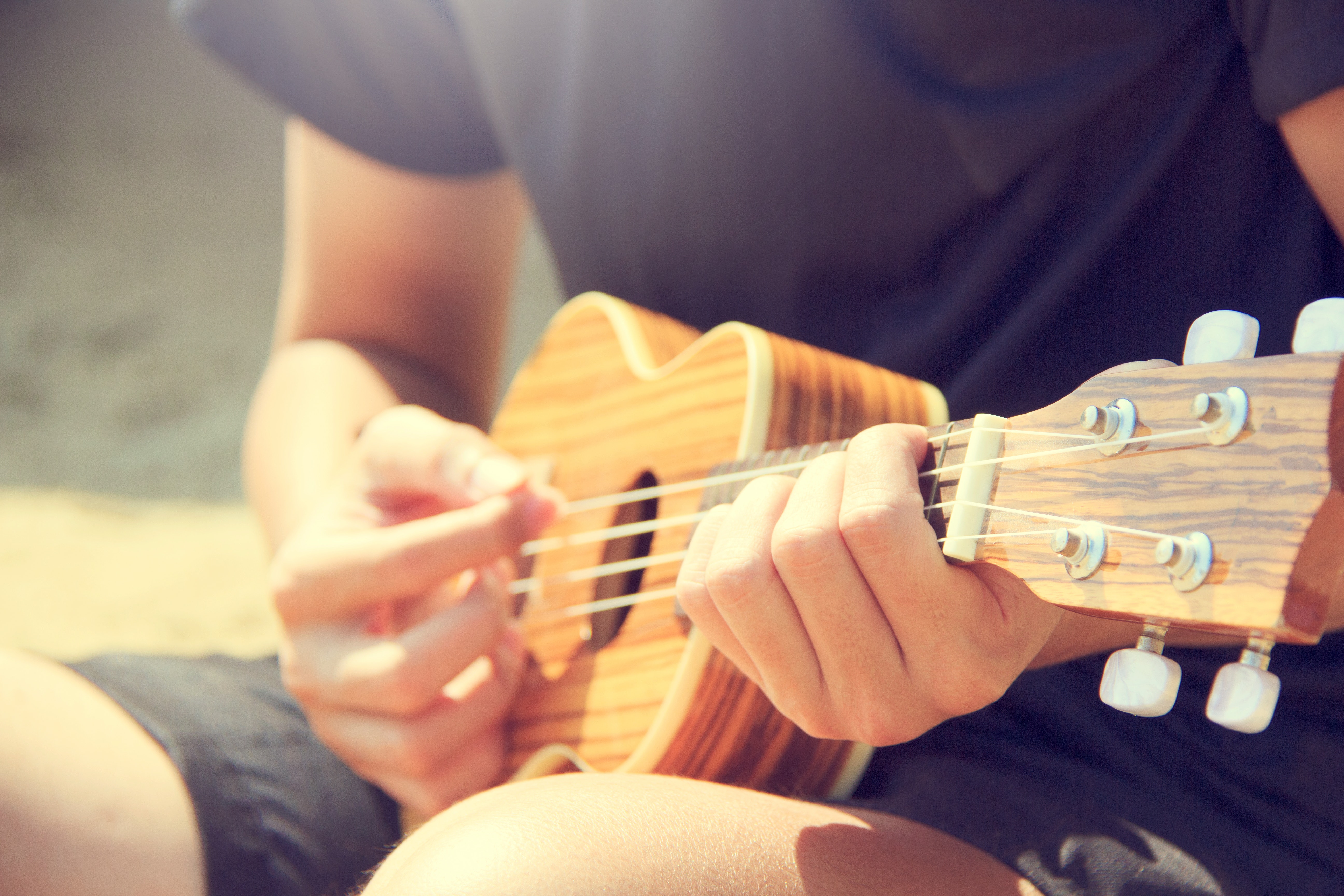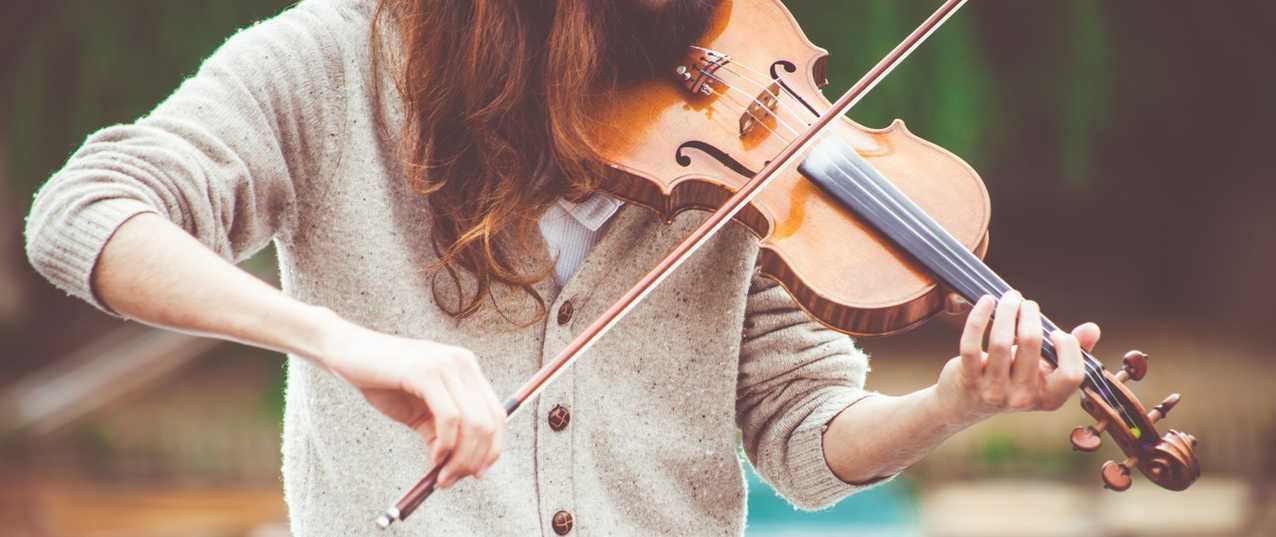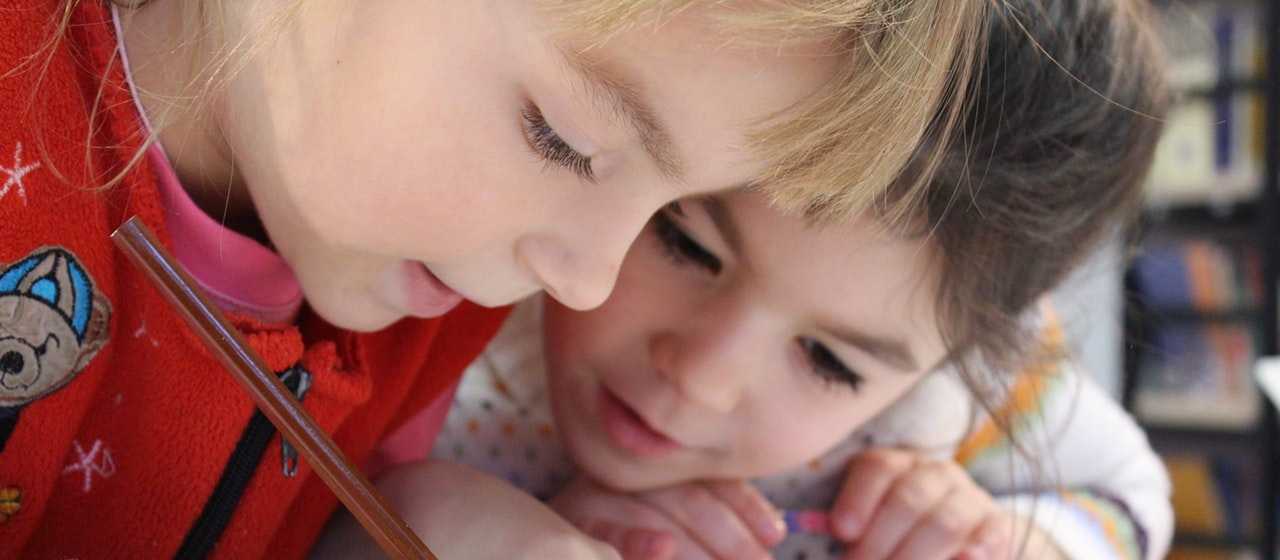It’s well established that introducing children to music from as early as birth greatly increases their development. In fact, many health practitioners today thoroughly recommend parents play music to their babies while they are still in the womb.
Then, once a child is born and begins to take in the world, music can stimulate their brains and encourage such skills as language, reading, and even comprehension of mathematical concepts. Even better, there are thought to be a number of long-term benefits.
However, though there are plentiful campaigns to get more primary aged children taking up a musical instrument, the number of students that go on to actively study music continues to decline.
Therefore, getting your child interested in music very early on cannot be recommended enough and if they’re to ever go on and enjoy the subject and take up a musical instrument long term, starting as early as possible is going to be a huge help.
Benefits of Playing a Musical Instrument
By exposing our children to music as early as we can and working to overcome any possible barriers, we equip them for a greater future.
Numerous studies show that there are many practical benefits to learning a musical instrument and statistics now routinely demonstrate links between music, academic performance and whole series of mental, physical and emotional benefits.
Therefore if we can offer such opportunities to all our children, more of us can begin to see why music is so important for child development.
Learning an Instrument Leads to Faster Reaction Times
A recent study conducted by the University of Montreal demonstrated that people who can play a musical instrument are more mentally alert, with faster reaction times.
This is thought to be the result of the complex process of learning an instrument which involves multiple senses all working in harmony, including touch and sound.
This ability to create the sought-after sound through multiple senses working in synchronicity is thought to enhance working memory and in the long-term strengthen the neural connections between key regions of the brain.
Learning Music Improves Maths, Reading & Comprehension
Many studies have demonstrated that both adults and children that can play an instrument have improved executive functions. These are the cognitive processes involving memory, focus, attention and the ability to carry out multiple tasks competently.
When a child starts to read music, they must learn to understand new concepts including beats, scales, and notes, which is a key transferable skill that will help them read in a logical order and help them to understand other abstract concepts in the classroom. This dramatically helps both their reading and comprehension skills.
Likewise, when they come to learn rhythms, scales, and beats, they’re intertwining music with maths like when they divide and do fractions while recognizing patterns.
Music Training Improves Memory
Naturally, learning to play a musical instrument requires the learner to understand the verbal information, store it in their memory bank and retrieve them on command.
For many years people had made the assumption that this repeated activity helps to improve memory and several studies now seem to validate these claims. For example, one study in the journal Nature found that music training improved memory.
In particular, this study demonstrated that musicians had improved verbal memory compared to people that had never played an instrument.
Improves Finger Strength & Dexterity
Learning to play an instrument commands both finger control and strength. Playing a set of notes well requires a range of different skills to be developed and so with practice, hand-eye coordination, together with the strength and dexterity of the fingers all see huge improvements.
As they get older and move onto more intricate, fullscale instruments, the hand-eye coordination now also requires feet and/or breath control to be involved. Full drum kits have the pedal drum, pianos have the foot pedals and even when it comes to singing whilst playing, good coordination is needed!
The coordination and dexterity required to play an instrument or multiple instruments at once is something to work towards. With practice, it comes naturally over time and of course, the dexterity and coordination that the child picks up are transferable skills which can aid them in other activities they do at school.
Improves Listening Skills
When children learn how to play an instrument, they must also discover the vital power of listening. Whether this is instructions from a teacher or the pitch, speed, and rhythm of the instrument, listening intently is essential for them to be able to hear the sounds they are producing. This is a valuable musical skill.
Getting a grasp on the sound of notes from early on will give them an advantage when learning music theory or playing an instrument later on in life. It gears them up for knowing which notes work well together and how they are used with timing to create music.
This sound awareness is something they can carry with them in life and build upon. Undoubtedly, it will benefit them greatly if they do decide they want to use this knowledge to enter a career in the music industry.
In summary, it’s clear that the perception that music is a creative endeavor alone is simply not true. Of course, you can create some beautiful sounds, but over time you can also reap the rewards of the mental, emotional and other associated benefits of learning to play a musical instrument.
How to Introduce Musical Instruments to Kids
It’s understandable that getting a child to take up a musical instrument willingly is an excellent step. However, some parents, carers, and teachers may find this natural process a little tricky, especially if they’ve no prior experience of playing an instrument themselves. Yet, it’s much simpler than you think.
Musical Instruments for Babies
What we often don’t realize is that the most straightforward musical instruments that we use, such as shakers and wooden spoons on bowls, alongside singing silly songs full of repetition engage babies and encourage an early love for music using easy to find instruments!
You can also play a wide range of music types to your baby, especially when they begin to sit up in their chair and take in the world around them. This is a fantastic time to introduce different types of music and soothing classical music comes in very useful as part of a successful night time routine.
At this stage, toys which have bells and make sounds are great but try early years musical instruments as soon as you can such as baby drums, baby musical instruments (wooden), a baby musical instruments set, and even a baby bongo drum, which all work to stimulate the senses and build experience.
Tip: Allow them to hold rattles and toy rainmakers safely, so they get a feel for the vibrations. These items can also be used as musical instruments for toddlers and babies, alike.
Musical Instruments for Pre-Schoolers
When we want our toddlers to get active, we put on louder music and watch as they try to move along to the beat, mimicking the sounds they hear. At this early stage, infants can recognize a songs melody long before they can understand the words, so any musical instrument songs for pre-schoolers are perfect when in abundance with this age group.
More so, when parents then take this melody further and use it to incorporate lyrics about daily activities, adopting a higher voice, they show their child that music is a repetition of songs. This leads to a greater understanding of words and indeed memorization.
Tip: At this stage, noisy musical toys are the best musical instruments for toddlers! Tambourines, drums, keyboards, and cymbals make great musical instruments for 1-year-olds. Encourage them to experiment but not worry about range, rhythm or tempo just yet.
Let them enjoy making a sound. Look for musical instruments for kids to make and get them actively involved in creating their own with items found around the home.
As at this age they are learning brand new words and the association of those words to particular categories it is also a great stage int heir life to expand their musical vocabulary. They can use this time to get to know all the different instruments that we use to make music and how they sound individually.
The video below in entertaining for kids and makes a memorable lesson about the elements of different instruments, how they are played and how they sound when played individually and together.
Musical Instruments for School Age Children
As children make their way into the school environment, teachers will often begin using simple musical instruments for kids, alongside adding clapping and tapping into their musical performances.
This slowly introduces children to the concept of rhythm, and all without most of them realizing they are beginning to learn the very basics of music.
You could help at home here by using such items as a child tambourine, which is considered to be one of the best musical instruments for 3-year-olds, and great for nursery and pre-school kids too. You can then progress to my first drum kit, which makes an exciting new musical experience for the young ones.
Over time, as children edge towards the end of elementary education, usually around the seven to ten age range, they become more aware of their likes and dislikes and preference for music types, expressing an interest in learning to play a specific type of instrument.
Tip: Try a taster session of several musical instruments here and offer them some easy sheet music to look through casually. Consider teaching them the fundamental music notes here using your own mnemonics for FACE, and perhaps the usual EGBDF of – Every Good Boy Deserves Football.
Musical Instruments for Kids to Make
Making a musical instrument is a great step to take, especially for babies, toddlers, and pre-schoolers. At this age, they have probably already discovered the thrill of banging on pots and pans, yet by making their own, they can get creative and learn the fundamentals.
Recycled packaging, elastic bands and simple objects such as wooden spoons and metal objects make great sounds. Best of all – it’s completely free and at this young age is a great way to learn the basics, build confidence and experience.
When is a kid ready to learn a real musical instrument?
Usually, before they reach elementary school, their experience with playing musical instruments would be limited to the various toy musical instruments and homemade ones that they have played with.
Although this has great benefits for the youngsters as it gets them used to the feel of an instrument and the concept of making pleasant sounds using an instrument it is not the real thing.
When it comes to elementary school, kids will normally be fully aware of what music is and how joyous it can be. At this age, they are ready to start developing the refined skills it takes to learn music. These include the actual physical handling and playing of the instrument as well as the recognization of notes and how to read sheet music.
At this age, it’s very encouraging for them to have their very own real instruments, such as a recorder or a ukulele for example. This will not only give them a sense of pride in owning one for themselves, but they can also practice at home and start to learn to care for their instrument.
Best Musical Instrument to Learn for a Child First
Recorder: Often used in many a school as a first woodwind instrument is a recorder. One of the easier of instruments to start playing and the best musical instrument to learn first as it has fewer holes needed to focus on.
The recorder needs children to develop coordination between breathing, mouth and the finger placements required to create notes. It’s also an extremely cost-effective choice for both parents and schools alike!
Being a classic starter woodwind instrument, the recorder is a great way to gear a child up for more advanced woodwinds such as the flute, clarinet, and saxophone. Breath control and finger placement are key skills to build upon using the recorder.
Viola: A great introduction to a stringed instrument, the viola is very similar to the violin in design but offers beginners a more prominent and therefore more comfortable size to begin practicing on.
Additionally, the basic concepts learned on this instrument can be directly applied to the violin so a smooth transition can be made as the child grows. The only difference really is that the tones produced by a viola are deeper than by a violin.
The viola is a great entry point for the violin family of instruments (violin, cello, viola, and double bass) which can be difficult and take many years to reach an intermediate level. You could, however, start with the best kids violin right away. An early start with these instruments is highly advantageous.
Piano Keyboard: This combined choice is often favored by children new to playing an instrument. With the keyboard element, they can add a variety of backgrounds and note sounds as well as change the tempo when they like.
Smaller than a standard piano and great for learning before upgrading to the piano, a keyboard which is a full size and emulates a real piano allows younger hands to determine the correct finger spacing and scale of the real thing.
This type of instrument can be as basic as you like but if it comes complete with many great features, you can also keep them aside and let your child get on and learn the basics, introducing these features later to increase their enthusiasm.
Pianos and keyboards are the best instruments for kids to learn music theory as most music theory literature teach from the perspective of a piano. Learning the piano gives a boost in understanding music theory; knowledge that can make it easier to learn new instruments.

Ukulele: For those younger children who don’t quite have the strength and coordination needed to play the guitar, the Ukulele is a perfect sized beginners instrument which is swiftly rivaling that of the recorder for many beginners to master.
It’s also said by many to be the best instrument to learn for a child. With just four strings to learn this is a fun way to get children involved in music lessons and offers the chance of many songs to be played and enjoyed. Ultimately, it gives younger members the confidence to move onto a guitar once they have mastered it, as it leaves them hungry for more.
The finger placement on a Uke is considerably easier than on a guitar and the chords are therefore easier to learn. This makes the Ukulele a good introduction to playing instruments in the guitar family as it gets them used to strumming and fingerpicking too. The best kids ukulele are not the smallest (soprano) but a size with more finger space like the concert.
Guitar: Perhaps the favorite of many a budding rock star, the guitar family offers acoustic and classical to bass and electric and is often favored by those looking to learn an instrument.
You need to make sure here that you select the best kids guitar for your child regarding their height and overall frame. With a ¾, a ½ and a full size available, getting the right one here will make all the difference in their playing ability.
The guitar can be a painful test of endurance when learning which can be offputting for some kids. A nylon-stringed classical guitar may be more cumbersome than a steel string acoustic or an electric guitar but is softer on the fingers.
The Drums: This Percussion instrument is often left until much later in a child’s life as it’s a more specialized piece of kit for schools to have on site. However, you didn’t need a full and expensive drum kit to start out with, and there are many compact models, such as a children’s drum kit, or electronic drum pads which you could easily introduce into the home or classroom.
Typically, some music teachers will suggest waiting until your child has the strength and coordination when holding drumsticks before starting out on the big drums. However, it’s possible to begin working towards such beats and rhythm with just one primary wooden drum to start and then adding a cymbal to the mix, getting an idea of how your child feels about this larger instrument beforehand.
Check with your child’s school to see what they offer regarding music lessons. Some will have spaces for a select number of pupils which are free of charge while some may offer discounts or subsidies through the school.
Alternatively, if you’re looking at purchasing a musical instrument, there are many websites and shops which offer reduced prices, and even sound quality used instruments. There is also a selection of companies who provide instruments for hire, meaning your child can get a feel for several before making any long-term decisions.
How to Successfully Teach Your Child Music
Unfortunately, for many children and teenagers, a love of music can often be dampened by the mass of dry theory they are introduced to when taking up a musical instrument. This is particularly so in those often-difficult teenage years.
However, there are so many benefits to learning music theory, alongside various benefits of learning to play a musical instrument. The main benefit is that this knowledge gives a greater ability to learn and play multiple instruments as well as reading and writing music.
When you are teaching your child music, or if they have a teacher or are learning at school, there are some ways in which you can help.
- Make music real and bring it off the page and to life as often as you can for your child.
- Learn with them.
- Encourage commitment. Even if your child can’t yet thoroughly read music, encourage them to play along and give it a go.
- Mix up those activities such as playing an instrument with listening, composing, reading and writing.
- Go to concerts.
- Play all music types and introduce more.
- Listen to music on a cd player, record player, digitally, and on cassettes to experience the difference they all make.
- Encourage them to discover new music and try to recreate it on their own instruments.
- Buy blank music sheets, or a music sheet workbook for them to write their own music – make this a fun activity for the family.
- Find sheet music which appeals to them and allows them to go through and write the notes out.
- Get them to perform for others when younger. When older, talk about them joining a band or a group.
Promote Passion Not Progression with Your Childs Musical Tastes
Music gives younger people a purpose. It allows them to remove themselves from life when it gets a bit tough and immerse themselves in the sound. The many health benefits of playing a musical instrument can’t be denied, with social interaction encouraged as they get to know like-minded people and groups. As if that wasn’t enough, music also aids revision techniques.
Resist the urge to concentrate on grading and instead encourage that enthusiasm and passion which your child showed before they could even walk and talk!
Allow them to build up familiarity and a love for the instrument – how to take care of it, clean it and store it – so it becomes less daunting when they settle down to play it.
Finally, when they’re ready, encourage them to learn to read music. This way you not only allow them to learn and enjoy their instrument without any added pressure, but you ultimately create a lifelong love of music.
Learning Music: Kids Resources
The Dallas Symphony Orchestra website has a wealth of information for kids to become familiar with and learn about music and instruments. It teaches about the different instruments you would find in an orchestra and has great tips for kids who are beginning to practice.
Has a wealth of games and engaging learning activities for kids to get started with learning to play an instrument and with music theory. There are also great teaching tips for parents and teachers too!
This is a great resource for your kids to familiarize themselves with music theory concepts. It has a sleek presentation with interactive lessons, exercises, and tools going through music theory in a simple and easy to understand way.
This website offers free printouts of sheet music which include lessons, sheet music and games for all ages. It makes the dry theory more engaging by being colorful and friendly to children.
Happynote has interactive games which help to teach the basics of music theory. The games and music theory learning resources available are fun, pretty and friendly for children of all ages.



This was so informing. I am going to look into this for my son.
This is such an informative post! I played the piano and recorder when I was a child and absolutely loved it! Music has always been important in my life. When my son was still in my womb, I would sing to him every day and now that he is with us, we are always singing and playing music for him. He really enjoys it! I will look into some of these instruments for babies. I love your section about kids making homemade instruments. So fun!!
I didn’t know there were so many benefits of musical instruments for children! I guess I need to start getting my little ones into music ASAP. Thanks!!
Lots of information! Thank you! My mom had me do piano lessons when I was young, and the teacher told my mom, “I could keep taking your money, but I would feel bad, your daughter has no musical talent whatsoever!” LOL!
Music is so important for kids. I’m so grateful for my music education, even if I didn’t continue with it as an adult. I hope to instill the same love of music with my son.